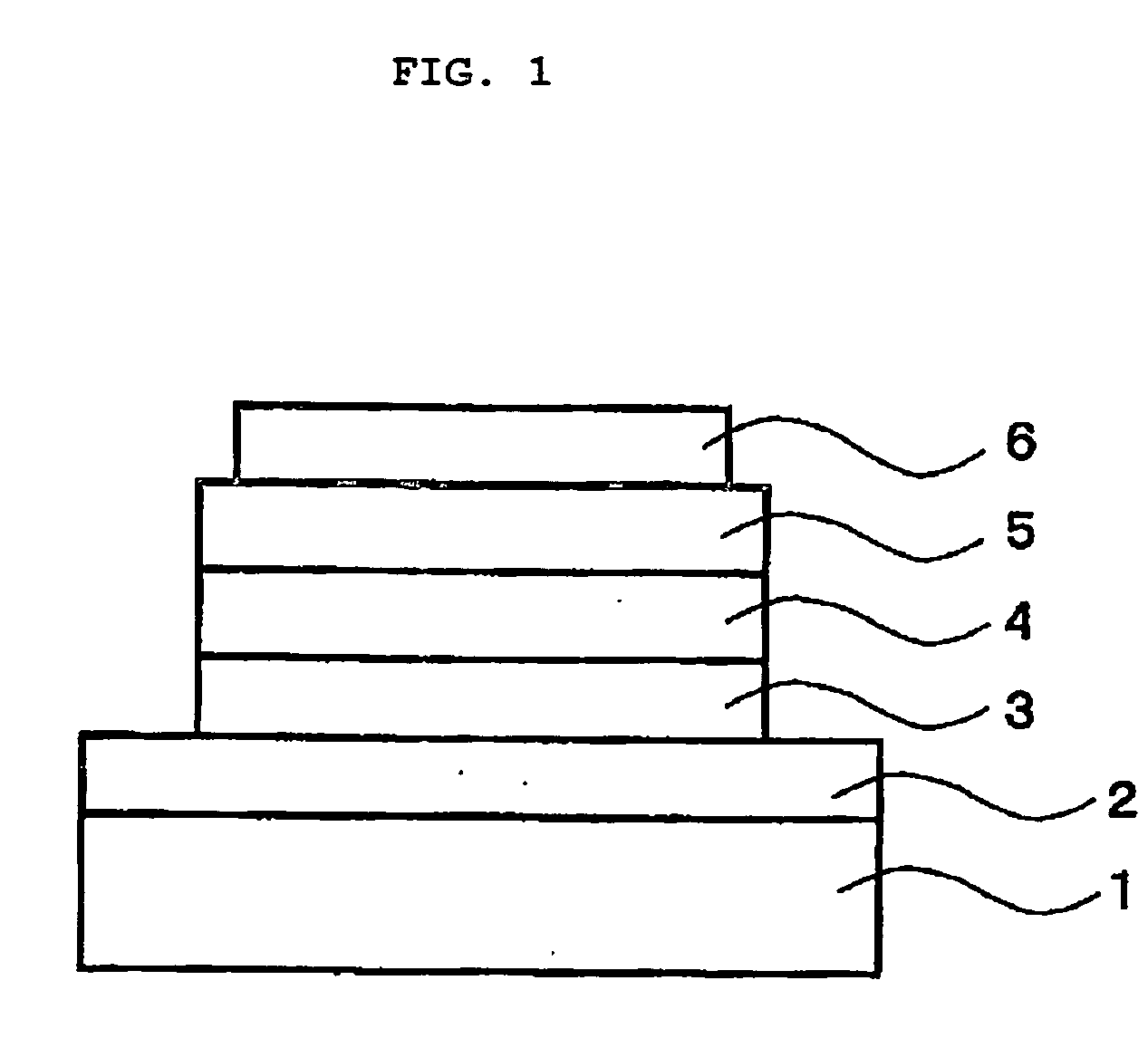Organic polymer light-emitting element material having gold complex structure and organic polymer light-emitting element
a light-emitting element and polymer technology, applied in the field of polymer-based organic light-emitting element materials, can solve the problems of complex structure, high cost, and difficulty in forming organic thin films having a uniform thickness, and achieves high luminous efficiency, large-area formation and mass production
- Summary
- Abstract
- Description
- Claims
- Application Information
AI Technical Summary
Benefits of technology
Problems solved by technology
Method used
Image
Examples
example 1
Synthesis of Polymerizable Gold Complex (1)
[0116]
[0117] Polymerizable Gold Complex (1) was synthesized by reacting sodium tetrachloroaurate (III) with thiodiglycol and then with bis(diphenylphosphino)methane having a polymerizable functional group. More specifically, 20 ml of tetrahydrofuran (hereinafter simply referred to as “THF”) was added to 2.0 g (5.2 mmol) of bis(diphenylphosphino)-methane and while cooling on ice, 3.5 ml (5.6 mmol) of a 1.6M hexane solution of n-butyl lithium was added dropwise. After adding the THF solution containing 10 mg (0.05 mmol) of Lithium tetrachlorocuprate to the resulting slurry, a 10 ml THF solution containing 0.85 g (5.6 mmol) of 4-vinylbenzyl chloride was added dropwise and stirred at room temperature for 3 hours. Thereafter, the solvent was removed by distillation under reduced pressure and the organic material was extracted with dichloromethane and then dried under reduced pressure. The obtained solid was purified by silica gel column chromat...
example 2
Synthesis of Polymerizable Gold Complex (2)
[0120]
[0121] Polymerizable Gold Complex (2) was synthesized by the reaction of Polymerizable Gold Complex (1) and bis(diphenylphosphino)methane. More specifically, 150 mg (0.20 mmol) of Gold Complex (1) was dissolved in 10 ml of dichloromethane and thereto, 77 mg (0.20 mmol) of bis(diphenylphosphino)methane and 100 mg (0.39 mmol) of silver trifluoromethanesulfonate were added and stirred at room temperature for 2 hours. After removing the solvent by distillation under reduced pressure, the obtained reaction mixture was extracted with dichloromethane and then dried under reduced pressure. The residue was dissolved in a small amount of dichloromethane and after further adding methanol, concentrated and the obtained crystal was collected by filtration and dried to obtain 118 mg (0.096 mmol) of the objective Polymerizable Gold Complex (2). The identification was performed by CHN elemental analysis and mass spectrometry.
[0122] Elemental analys...
example 3
Synthesis of Polymerizable Gold Complex (3-1)
[0123]
[0124] Polymerizable Gold Complex (3-1) was synthesized by reacting the gold complex obtained by the reaction between sodium tetrachloroaurate (III) and triphenylphosphine having a polymerizable functional group, with phenylbutadiyne synthesized by a known method (see, P. Cadiot and W. Chodkiewicz, Chemistry of Acetylenes, H. G. Viehe, ed., Marcel Dekker, New York (1969)). More specifically, 20 ml of dried THF was added to 341 mg (14 mmol) of magnesium and thereto, a 10 ml THF solution containing 2.70 g (15 mmol) of 4-bromostyrene was added dropwise to prepare a Grignard reagent. To the resulting solution, a 10 ml THF solution containing 2.50 g (11 mmol) of chlorodiphenylphosphine was added dropwise and stirred at room temperature of 1.5 hours. After removing the solvent by distillation under reduced pressure, the residue was purified by silica gel column chromatography and recrystallized from a hexane solution to obtain 2.30 g (8....
PUM
| Property | Measurement | Unit |
|---|---|---|
| internal quantum efficiency | aaaaa | aaaaa |
| internal quantum efficiency | aaaaa | aaaaa |
| thickness | aaaaa | aaaaa |
Abstract
Description
Claims
Application Information
 Login to View More
Login to View More - R&D
- Intellectual Property
- Life Sciences
- Materials
- Tech Scout
- Unparalleled Data Quality
- Higher Quality Content
- 60% Fewer Hallucinations
Browse by: Latest US Patents, China's latest patents, Technical Efficacy Thesaurus, Application Domain, Technology Topic, Popular Technical Reports.
© 2025 PatSnap. All rights reserved.Legal|Privacy policy|Modern Slavery Act Transparency Statement|Sitemap|About US| Contact US: help@patsnap.com



